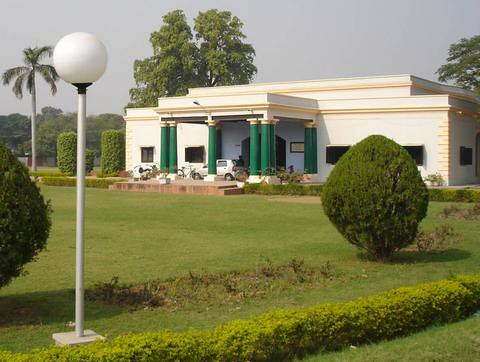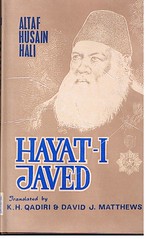"There are two kind of people came to this world, one who work to live and the other who live to work".
Sir Saiyad lived to work
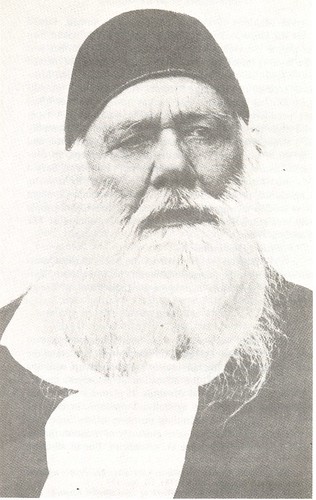 |
Sir Syed Ahmad Khan |
|
Born : 17th October 1817 Delhi
Died : 27th March 1898, Aligarh
Father : Saiyad Muhammad Muttaqi,
Mother : Azizun Nisa Begum
Wife : Parsa Begum(Mubarak) Married : 1836
Children : Saiyad Hamid, Saiyad Mahmud and Amina.
Biography: Hayat-e-Javed (By Maulana Altaf Husain Hali)
“ Hai Dileri daste-arbab-e-siyaasat ka Aasa` “
“Sir Saiyad was a prophet of education “ (Mahatma Gandhi)
“The real greatness of the man (Sir Saiyad) consists in the fact that he was the first Indian Muslim who felt the need of a fresh orientation of Islam and worked for it’’ (Sir Allama Iqbal)
“Sir Saiyad was an ardent reformer and he wanted to reconcile modern scientific thought with religion by rationalistic interpretations and not by attacking basic belief. He was anxious to push new education. He was in no way communally separatist. Repeatedly he emphasized that religious differences should have no political and national significance”.
( Jawaharlal Nehru, Founder Prime Minister of India)
“Sir Saiyad’s vision and his laborious efforts to meet the demands of challenging times are highly commendable. The dark post 1857 era was indeed hopeless and only men like Raja Mohan Roy and Sir Saiyad could penetrate through its thick veil to visualize the Nation’s destinies. They rightly believed that the past had its merits and its legacies were valuable but it was the future that a society was called upon to cope with. I offer my homage to Sir Saiyad for his vision and courage that withstood all obstructions both from the friends and the foes”
(Mr. Inder Kumar Gujral, Former Prime Minister of India).
The Founder
Sir Syed Ahmed Khan, one of the architects of modern India was born on October 17, 1817 in Delhi and started his career as a civil servant.
The 1857 revolt was one of the turning points of Syed Ahmed’s life. He clearly foresaw the imperative need for the Muslims to acquire proficiency in the English language and modern sciences if the community were to maintain its social and political identity, particularly in Northern India.
He was one of those early pioneers who recognized the critical role of education for the empowerment of the poor and backward Muslim community. In more than one ways Sir Syed was one of the greatest social reformers and a great national builder of modern India. He began to prepare the road map for the formation of a Muslim University by starting various schools. He instituted Scientific Society in 1863 to create a scientific temperament among the Muslims and to make the Western knowledge available to Indians in their own language. The Aligarh Institute Gazette, an organ of the Scientific Society was started in March 1866 and succeeded in transforming the minds in the traditional Muslim Society. Anyone with an average level of commitment would have backed off in the face of strong opposition but Sir Syed responded by bringing out another journal ‘Tehzibul Akhlaq’ which was rightly named in English as ‘Mohammedan Social Reformer’.
In 1875, Sir Syed founded the Madarsatul Uloom in Aligarh and patterned the MAO College after Oxford and Cambridge universities that he visited on a trip to London in 1869. His objective was to build a college in tune with the British education system but without compromising its Islamic values. He wanted this College to act as a bridge between the old and the new, the East and the West. While he fully appreciated the need and urgency of imparting instruction based on Western learning, he was not oblivious to the value of Oriental learning and wanted to preserve and transmit to posterity the rich legacy of the past. Dr. Sir Mohammad Iqbal observed that “the real greatness of Sir Syed consists in the fact that he was the first Indian Muslim who felt the need of a fresh orientation of Islam and worked for it--- his sensitive nature was the first to react to modern age”.
The aim of Sir Syed was not merely restricted to establishing a college at Aligarh but at spreading a network of Muslim managed educational institutions throughout the length and breadth of the country. Keeping in view this, he instituted All India Muslim Educational Conference in 1886 that revived the spirit of Muslims at national level. The Aligarh Movement motivated the Muslims to help open a number of educational institutions. It was the first of its kind of such Muslim NGO in India, which awakened the Muslims from their deep slumber and infused social and political awareness among them.
He contributed much to the development of the modern society of the subcontinent. During Sir Syed’s own life time, ‘The Englishman’, a renowned British magazine of the 19th century remarked in a note on November 17, 1885: ‘Sir Syed’s life “strikingly illustrated one of the best phases of modern history”. He died on March 27, 1898 and lies buried next to the main mosque at AMU.
An Architect of Modern India
History of social and educational reforms in Indian sub-continent can not be completed without Sir Saiyad Ahmad Khan. He is one of the great thinker, philosopher and revolutionaries who had dedicated his complete life for his nation and especially for his community. Nineteenth century was a hard time for the nation of India and especially for Muslims in the aftermath of 1857 revolt against British colonialism. Sir Saiyad tried and motivated Indian Muslim. In the history of India’s transition from medievalism to modernism, Sir Saiyad stand out prominently as a dynamic force pitted against conservatism, superstitions, inertia and ignorance. He contributed many of the essential elements to the development of modern India and paved the growth of a healthy scientific attitude of mind which is sine qua non for advancement, both material and intellectual. Sir Saiyad said : After the Revolt of 1857, I was grieved neither on account of the plunder of my house nor on account of the loss of property that I had suffered. What saddened my heart was the misery and destruction of people. When Mr. Shakespeare offered to me the Taluqa of Jehanabad, which originally belonged to a distinguished Saiyad family, and yielded an annual rental of more than a lac rupees, as a reward of my services, my heart was deeply hurt. I said to myself, how can I accept this jagir and become the Taluqdar while all the people are in distress. I refused to accept it.
Sir Saiyad was born on 17th October 1817 in Delhi in a respectable family of Saiyad Mohammad Muttaqi & Azizun Nisa Begum . Sir Saiyad and Maulana Qasim Nanotwi (Founder of Darul-Uloom, Deoband) studied together under the able guidance of Maulana Mamlook Ali in Delhi. Sir Saiyad studied mathematics, Geology and Medicine from his uncle, Saiyad Zainul Abedin. He also studied Arabic literature, Tafseer-e-Quran, Hadith, and Fiqah from Maulana Makhsusullah (s/o Maulana Shah Rafiuddin Dahlwi ), Maulana Nawazish Ali and Maulana Faizul Hasan Saharanpuri. In 1836 Sir Saiyad got married to Parsa Begum (Mubarak) and had two sons, Hamid (born in 1849) and Mahmood (born in 1850) and a daughter Amina. His elder brother Saiyad Muhammad started a weekly newspaper in 1837 and out of love of his younger brother Saiyad Ahmad (also known as Saiyad in his youth), named the newspaper Saiyadul-Akhbar . After Saiyad Muhammad’s death in 1845, Sir Saiyad Ahmad started managing Saiyadul-Akhbar.
Sir Saiyad was a great champion of Hindu-Muslim Unity. Addressing a big gathering at Gurudaspur on Jan. 27, 1884 He said: “ Hindus and Muslims ! Do you belong to a country other than India ? Don’t you live on this soil and are you not buried under it or cremated on its Ghats ? If you live and die on this land, then bear in mind, that Hindus and Muslims is but a religious word; all the Hindus, Muslims and Christians who live in this country are one nation.”
Father of Aligarh movement
This most respected and important educational centre for Indian Muslims was initially founded as Mohammedan Anglo Oriental College (MAOC) at Aligarh in 1875 by Sir Saiyad Ahmed Khan and subsequently raised to the status of Aligarh Muslim University (AMU) in 1920. Aligarh Muslim University (AMU), known more as a movement than an academic institution is one of the most important chapters of Indian history as far as the sociology of Hindu-Muslim relation is concerned. Sir Saiyad said: “This is the first time in the history of Mohammedans of India, that a college owes it nor to the charity or love of learning of an individual, nor to the spending patronage of a monarch, but to the combined wishes and the united efforts of a whole community. It has its own origin in course which the history of this county has never witnessed before. It is based on principles of toleration and progress such as find no parallel in the annals of the east.” Sir Saiyad’ famous speech which he made while foundation of MAO College was laid down by Lord Lytton on 18th January, 1877 is the soul of Aligarh Movement. Sir Saiyad said: “from the seed which we sow today, there may spring up a mighty tree, whose branches, like those of the banyan of the soil, shall in their turn strike firm roots into the earth, and themselves send forth new and vigorous saplings”.
It’s a common misconception that Sir Saiyad and Aligarh Movement is anti-oriental studies (Islamic and Eastern studies) and MAO College was started in a reactionary movement to counter the religious school, Darul-Uloom Deoband, started by Maulana Qasim Nanotvi (another student of Sir Saiyad’s teacher Maulana Mamlook Ali Nanotvi). In fact Sir Saiyad had a broader vision and had put forward the need of the hour to get equipped with the modern education to improve the social and economical conditions of Muslims of India. He never discouraged or denied the importance of religious and oriental studies. By his individual means and with the help of Muslim Educational Conference, he always tried to modernize the Madarasas, update their syllabus as per the need of the hour.
Sir Saiyad wrote a lot about these things in Tahzeebul-akhlaq. Sir Saiyad’s educational vision has two strong points;
- Adoption of Modern education
- Moral Education
From the beginning, Madarsatul-Uloom, later MAO College was equipped with the above philosophy. Tarbiyat of the students living in Hostels were part of the duties of Principal and Manager of Hostels. For Islamic and moral education, Sir Saiyad created a position of Nazim-e-Diniyaat for MAO College who was responsible for Islamic and moral education of the students. Dars-e-Quran was part of curriculum of the college and every morning before the start of the class, Allama Shibli Nomani used to give Dars-e-Quran for about half hour from 1887 to 1895 and later on the responsibility was handed over to Maulana Abdullah Ansari, the founder Nazim-e-Diniyaat.
Sir Saiyad breathed his last on Sunday, 27th March 1898. The funeral took place on Monday, 28th March 1898. The Janazah prayers were offered in the cricket field lead by the founder Nazim-e-Diniyaat, Maulana Abdullah Ansari (son in law of Maulana Qasim Nanotwi and grandson of Sir Saiyad’s teacher Maulana Mamlook Ali). The burial took place in College Jama Masjid.
Maulana Altaf Hussain Haali- writer of Sir Saiyad’s biography, HAYAAT-E-JAVED;
“After Sir Saiyad’s death, it was not only by words but also by actions that the people proved their love and respect for his high ideals. Almost at once, some people began to press for the foundation of Muslim University. The movement spread all over India and abroad and people started raising money for Sir Saiyad’s finest memorial.. Even in England students raised money for the Muslim University. People were surprised to see the interest of Englishmen and their efforts to collect money to fulfill the dream of Sir Saiyad to make MAO College as Muslim University. There is an old saying that a good friend is like a leafy tree. For when a tree is in full bloom one has the pleasure of its shade and the enjoyment of its fruits, and when it withers, its wood is put to many uses. Sir Saiyad was such a friend to the Muslims. When he was alive, he laboured for them with his body, his words, his pen and his money. When he died he left the memory of his love and work imprinted on their hearts so that they might come together and build on the foundations he has laid. “
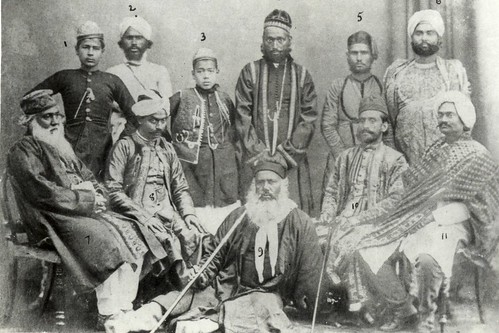 |
Sir Syed Ahmad Khan with family & Friends |
|
 |
Sir Syed Ahmad Khan with family & Friends (Colored*) |
|
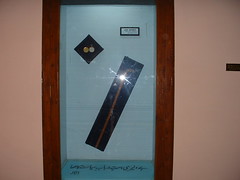 |
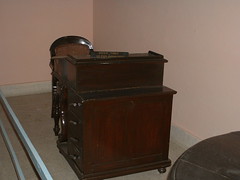 |
Sir Syed's Stick & Compass |
Sir Syed's Desk |
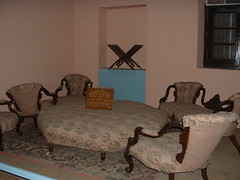 |
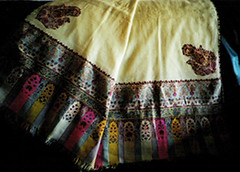 |
Sir Syed's Sofa Set |
Sir Syed's Doshala |
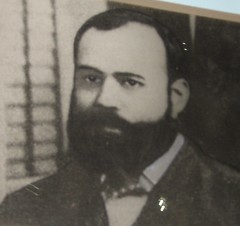 |
 |
Justice Syed Mahmood (Youngest son of Sir Saiyad) |
Mr. Syed Hamid (Eldest son of Sir Saiyad) |
 |
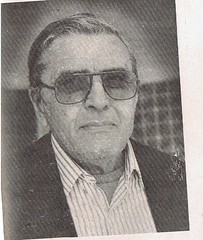 |
Sir Syed Ross Masood (Grandson) |
Mr. Syed Anwar Masood (Great grandson) |
 |
Sir Syed Ahmad Khan with Mohsinul Mulk and Syed Mahmood* |
|
 |
Sir Syed Ahmad Khan with Haji Ismail Khan of Dattawali |
|
 |
Sir Syed Ahmad Khan with his supporters and Well wishers* |
|
 |
Group Photograph of Sir Syed with the students of M.A.O.College |
|
 |
Janazah Prayer of Sir Syed Ahmad Khan |
|
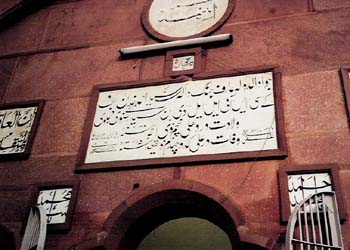 |
Maqbarah of Sir Syed Ahmad Khan |
|
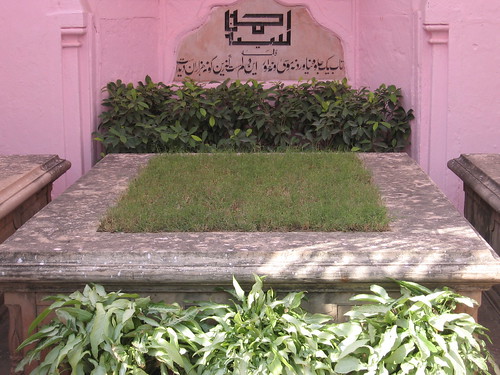 |
Maqbarah of Sir Syed Ahmad Khan |
|
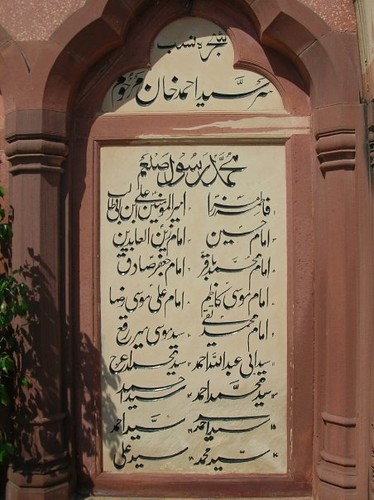 |
Shajarah-e-Nasb of Sir Syed Ahmad Khan -I |
|
 |
Shajarah-e-Nasb of Sir Syed Ahmad Khan -II |
|
**Sir Saiyid Ahmad Khan's Family Tree**


















